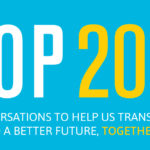An article by Steve Wright of the Grameen Foundation redefining Social Enterprise.
 Current definitions of social enterprise are based on how social enterprises are like financial enterprises except they are required to create good in addition to revenue. Financial enterprises are those enterprises that are not required to create good. They are only required to create revenue; therefore, it is of course possible that they create bad. Bad is created by a financial enterprise either by design or it is a negative externality meaning it is a consequence of the work but not an intended output. The cost of these negative externalities are largely borne by indirect stakeholders. A great example of this is the 2008 economic devastation wrought by treating housing as a speculative commodity. While a tremendous amount of money was made (and lost) in the financial enterprises engaged in this market, there was a negative externality experienced by homeowners who lost massive amounts of value in their homes and in many cases lost their actual homes. (It is worth saying that: 1) financial enterprises that create bad are… well… bad, and 2) some financial enterprises do not create bad.)
Current definitions of social enterprise are based on how social enterprises are like financial enterprises except they are required to create good in addition to revenue. Financial enterprises are those enterprises that are not required to create good. They are only required to create revenue; therefore, it is of course possible that they create bad. Bad is created by a financial enterprise either by design or it is a negative externality meaning it is a consequence of the work but not an intended output. The cost of these negative externalities are largely borne by indirect stakeholders. A great example of this is the 2008 economic devastation wrought by treating housing as a speculative commodity. While a tremendous amount of money was made (and lost) in the financial enterprises engaged in this market, there was a negative externality experienced by homeowners who lost massive amounts of value in their homes and in many cases lost their actual homes. (It is worth saying that: 1) financial enterprises that create bad are… well… bad, and 2) some financial enterprises do not create bad.)
I believe we need to change the definition of social enterprise to one that is categorically different from financial enterprise. This new definition should focus on the two unique aspects of social enterprise. The first is the primacy of creating value – doing good. I have written about this aspect before so I won’t go into it here. The second is the presence of an ecosystem of players with common purpose like clean and accessible water, education, financial services for the poor, housing, healthcare… No single organization can solve any of these problems alone but working collectively is largely unexplored. I believe the reason for that is the adoption of the financial enterprise model as the foundation for the definition of social enterprise. The financial enterprise model focuses on 1) profit first, 2) competition and differentiation. Where the model does enable cooperation the goals tend to be efficiency and economy. These are good things but they are not enough. We need a definition of social enterprise that explicitly recognizes a community of actors that comprise a social enterprise ecosystem. The purpose of the social enterprise ecosystem is to account for all aspects of cost and benefit and therefore eliminate negative externalities. An interesting example of turning negative externalities in to positive opportunity in the housing market was described by Matt Taibbi in his Rolling Stone Column. Another wonderful example is Sanergy, a Kenyan company that uses human waste – an output from their sanitation business – as an input for their alternative energy business.
The goal of understanding the economy as an ecosystem is to reconcile inputs and outputs at a larger scale and apply conservation laws to the whole system. It is critical that we conceptualize the health of the social enterprise ecosystem as not simply the aggregate value of many social enterprises. The theory of change must involve the math of emergence and the idea that the whole social enterprise ecosystem will be greater than the sum of its parts. The most unique aspect of a social enterprise ecosystem comes from the amorphic adjective “social” and the reality that monopoly, or monolithic scale, is antithetic to success. I believe there is additive value in cooperation and something like interdependence-with-redundancy that can be realized as accelerated progress towards global solutions. This is not social as in social media. This is social as in society and community. Social like love not social like Twitter.
The purpose of social capital is to serve the social enterprise ecosystem. Unlike our financial capital cousins, social capital is not an industry apart. Social capital markets are part of the social enterprise ecosystem. What this means is that success for social capital products is defined as identical to the success of the social enterprise ecosystem. I believe there is also a corollary that states definitions of success for social capital markets that are independent of the success of the social enterprise ecosystem are are distracting at best and destructive at worst. Distracting because it detaches social investment and social investors from the goals of the social enterprise. Destructive because social investment goals that are independent of social enterprise goals put an undue burden on the entrepreneur and actually lessen the ability to advance the social goal.
 The financial capital investment industry disagrees with this. There is much that social enterprise can and should borrow from financial enterprise but when a social enterprise simply replicates the entire financial enterprise model, it fails. This is the lesson of microfinance. Not that microfinance is somehow categorically bad. That is silly. The lesson of microfinance is that financial success is not a proxy for social success and that profit maximization is bad. The same holds true for social capital. Social capital markets must shrug off any power or status they have attracted due to their association with their casino cousin. To use a horrible quasi-religious metaphor, the role of social capital markets is to pay for the hammers to be used by the carpenters who are working to build us a better world. (Social capital enterprises need to do this sustainably which means they need to earn sustaining revenue. The purpose of that revenue is exclusively to enable the work to continue.)
The financial capital investment industry disagrees with this. There is much that social enterprise can and should borrow from financial enterprise but when a social enterprise simply replicates the entire financial enterprise model, it fails. This is the lesson of microfinance. Not that microfinance is somehow categorically bad. That is silly. The lesson of microfinance is that financial success is not a proxy for social success and that profit maximization is bad. The same holds true for social capital. Social capital markets must shrug off any power or status they have attracted due to their association with their casino cousin. To use a horrible quasi-religious metaphor, the role of social capital markets is to pay for the hammers to be used by the carpenters who are working to build us a better world. (Social capital enterprises need to do this sustainably which means they need to earn sustaining revenue. The purpose of that revenue is exclusively to enable the work to continue.)
Social capital markets have and should borrow much from financial capital markets but if we simply duplicate the model, we will fail. It may be useful to be an asset class as a stage in the development of social capital markets but to adopt a definition of asset class within financial capital markets in the long term is a mistake. We (those of us that are “social”) are not one end of a good <-> rapacious spectrum. The defining characteristics that set us apart are 1) that both the calculus of investment and the logistics of enterprise are part of the same ecosystem and are not separate industries (social capital enterprises are social enterprises), 2) recognition that all components of the ecosystem have a common purpose.
The tactics or presence of “the exit”; the amount of patience in patient capital; the quantity, quality and reality of the return; the amount available to catalyze scale or the missing middle; the provisioning of high risk seed capital; these are all design issues and the relative importance of these features depends entirely on the purpose of the product. To continue in this ridiculously declarative style, the purpose of the social capital product is to serve the social enterprise ecosystem; to first prove the model as described above and then to demonstrate that value comes to all of us if the social enterprise ecosystem is successful. This, I believe, is how we must begin to understand and measure our success. Is the social enterprise ecosystem healthy? This will require us to understand what healthy looks like. A critical aspect of this health is that it delivers value to (through?) all of its components or members or nodes. I think of this as a second iteration of value returned t the investor where the first iteration is a direct return from a specific social enterprise in proportion to the investment. The clearest example of this is the shop-local paradigm where living in a community and investing in a successful local business will provide you a first iteration return on the money you invested and a second iteration return that you can realize as a member of the community.
If we define the social capital product’s purpose exclusively in terms of a first iteration return provided to the investor per dollar invested, then we don’t solve the problem that we need to solve. If we focus on and get stuck at this first iteration then we will only create yet another powerful marketing and PR campaign to be exploited and stripped of all meaning and we will fail to integrate social investment into the social enterprise ecosystem. However, if we find and design practical and compelling ways for investors to realize value from the outputs of the social enterprise ecosystem, thus becoming part of the social enterprise ecosystem, then we have created something truly different and hopefully truly disruptive.



